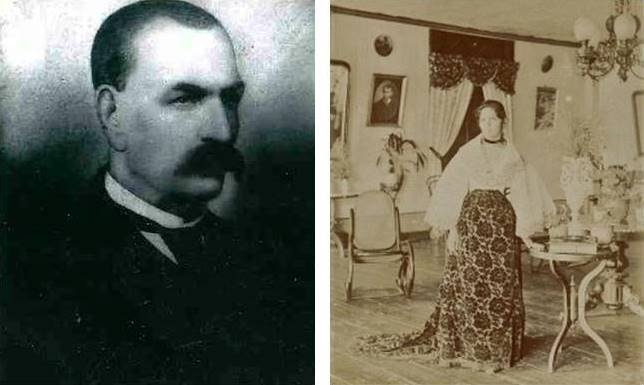Negros Spanish Connection
- PENN T. LARENA
The Spanish influence on the Negrosanon culture has been profound, having originated from its pueblo, personaje, and apellido.
From the late 1500s until 1898, Spain controlled the archipelago, instituting fierce Catholicism and Hispanic culture in the Southeast Asian nations.
This influence can be seen in our way of life, culture, culinary tradition, churches, and in our Cebuano language, that is a combination of Malay and Spanish words.
One of the living legacies by the Spaniards is the sugar industry and hacienda system.
 |
| 95-year-old lola Nelly Belloso-Villanueva, granddaughter of Don Ramon Belloso – a revolutionary hero from southern Negros, with grandson Christopher Nolan (left) and nephew Hector Villanueva |
 |
95-year-old lola Nelly Belloso-Villanueva, with grandson Christopher Nolan (left) and
wife Hanna Furusawa Nolan |
The “hacienda” was a world in itself and the plantation houses of the “hacendero” were objects of awe amid cane fields, far removed from the tiny “nipa” huts of the workers found in the fringes of the vast plantations. In most cases, the plantation houses were furnished with European furniture and other important trimmings.
The “hacienda” system developed a culture of dependence with the “hacendero” occupying the higher end, and the “sacada” at the lower end of the social structure.
In this regard, the “sacada” becomes overly dependent on the “hacendero” for all his needs. The lifestyle of the “hacendero” was in sharp contrast to that of the farmworker. The former was fond of publicly showing off his affluence, spending his money on such luxuries as Western-type mansions, Scotch whiskey, expensive suits and hats, and the like.

He also had a negative attitude toward physical labor which he considered demeaning and fit only for the “suluguon” or house helpers and the “sacadas”. This will explain why “hacenderos” had so many household helpers, especially in the more affluent sugar districts of Negros.
Early Europeans and Latin American settlers in Dumaguete and around Oriental Negros were Don Joaquin Montenegro y Mascato, Tomasa, Brigida and Nicolasa Elena Gomez (Gomez Hermanos) of Avila in Spain, Don Diego Garcia Baena and brother Ramon Garcia Baena (Cadiz, Spain), Don Agustin de Sandes of Mexico, Don Ramon Telesforo Gonzales Belloso (Extremadura, Spain), Don Anecito Villanueva (Chinese Español merchant), Don Pedro Gustavo Furbeyre (Frenchman), Camilo Rodrigo Antonio Rubio (Italian merchant), and Don Clemente Gil Diago, who shaped the history of Negros during the Spanish Regime. Their legacies are remembered till the present time through their grandchildren.
The Spanish administrators in Negros developed a system of ruling through village headmen. This role of letting the village headmen act as spokesmen for the Spanish authorities greatly increased the prestige and power of the village headmen.
When the question of title to the land came up, the village headmen designated themselves as the title-holders of the village lands. This misdistribution of land continues to this day. The village headmen and their descendants became a social class, known as principales. The principales had special privileges from the Spaniards, such as exemption from taxes.
The famous Paella Negra of Tinto Restaurant
The Spanish Empire depended very heavily on the clergy of the religious orders of the Catholic Church to spread Spanish culture and influence. The Dominicans, Franciscans, Recoletos, and Augustinians had the responsibility of converting the natives to Christianity.
As we commemorate the Philippine-Spanish Friendship Week, know that its bill was passed on July 22, 2002, and Republic Act No. 9187 was approved on February 5, 2003 – both as means to strengthen the relationship between two nations that share history, values, and traditions.
Spanish culture among Filipinos makes up a major part of their history. Spain had controlled the Philippines for more than 300 years, so it’s no surprise that there are many Filipino customs, traditions, and cultural norms that can be traced back to the Spanish regime. They left their mark, probably more so than any other foreign nation.
Happy Philippine Spanish Friendship Week
Nolan Plantation Houses Bais City
 |
| Spanish Historian Penn T. Larena and His cousin DILG head Chico Pastor |
Spanish Blood : Prof. Penn T. Larena and Vicky Kitane







Comments
Post a Comment